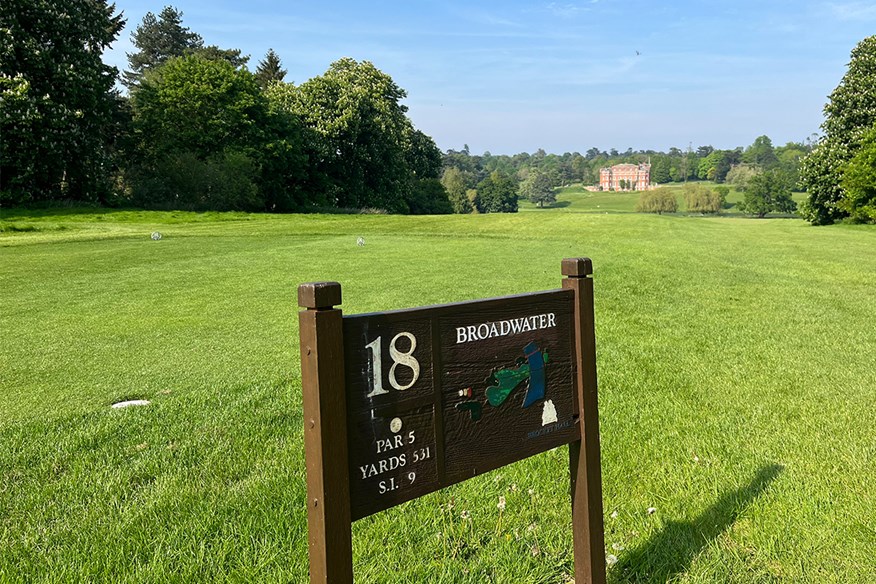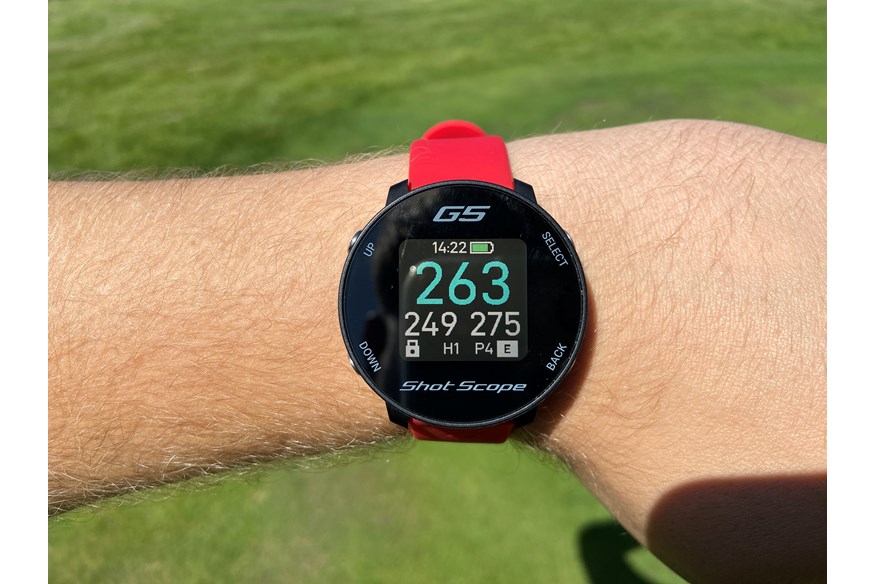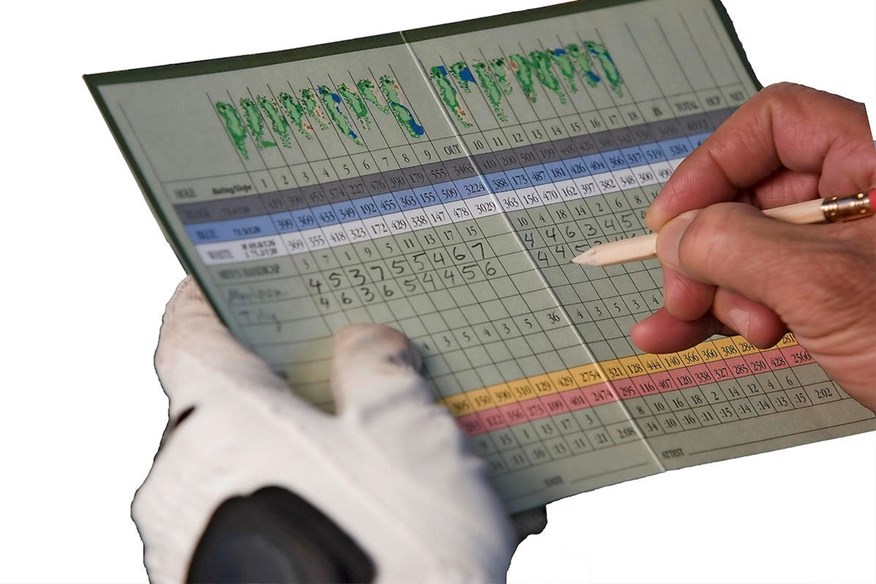How a mid-handicap golfer can shoot level par
Last updated:
What yardage would a golf course need to be for mid-handicap golfers to average level par? Plus some key learnings that can help with your scoring and enjoyment of the game on full-length courses.
The average handicap for male golfers is 16 in the UK and 14 in America, according to data from England Golf and the USGA. Let’s tally those and say the average male golfer has a handicap index of 15, which is what you’d call a “mid-handicapper”.
Most of us play golf courses that are somewhere between 6,000-7,000 yards in length. On a course of that standard length, a 15-handicap golfer averages 20.3 over par. (If you think the maths of a 15-handicapper averaging 20.3 over par doesn’t add up, remember: your handicap is meant to be you on a good day, not an average of all your rounds.)
But what length would a par-72 course need to be for this typical mid-handicap player to have a scoring average of level par? Could you shoot level if the yardage was under 6,000 yards? Go low under 5,000? Surely you’d break the course record if the course played under 4,000 yards? The answer may shock you…

For a 15-handicap golfer to average level par, the course would need to measure a mere 3,378 yards.
The par 3s would need to be 26 yards long. The par 4s 189 yards. And the par 5s 346 yards.
We know all this thanks to statistical analysis done by golf stats guru Lou Stagner, using data from Arccos Golf. Shot-tracking service Arccos gather on-course data from all their users and recently hit the milestone of tracking a billion shots, so they have an unrivalled amount of information when it comes to real-world golf. Lou Stagner is an Arccos Golf Data Insights Lead, co-host of the ‘Hack It Out Golf’ podcast, and one of the leading data research analysts on The PGA TOUR.
But before you start campaigning your head greenkeeper to chop your course in half so you can achieve your dream of becoming a scratch golfer, let’s look at some more useful takeaways we can glean from this.
1. Make your normal course play shorter
If the mountain won’t come to Muhammad, then Muhammad must go to the mountain. Barring your course suddenly becoming 3,378 yards long, which seems unlikely, you need to find a way to make its current yardage play shorter. The only way to do that is to hit the ball further.
How can you do that?

1a. Optimize your equipment
First, make sure you have the best driver, best shaft, and best golf ball for you. Most golfers aren’t using equipment that’s optimal for them and are leaving yards on the table as a result.
1b. Improve your technique
Improving your technique will help. Many mid-handicappers battle a slice, particularly with their driver, which robs them of distance as well as putting them in trouble down the right (or left for left-handers). Top coach Adrian Fryer has a quick way to stop your slice for good.
1c. Increase your swing speed
Increasing your swing speed would be a huge win, as every one mile-per-hour of swing speed can give you an extra three yards of distance with your driver. Put on 10mph and you’ll find yourself 30 yards further up the fairway, not to mention the fact that your increased speed will carry over to your irons, meaning you’ll be hitting much shorter clubs for your approach shots.
Studies show that a 5mph increase in clubhead speed correlates to a 3.6-shot drop in handicap.
How do we increase speed?
Swing speed training systems like SuperSpeed Golf or The Stack System will help.
I once had a lesson from Lee Cox, a golf coach widely regarded as the main man when it comes to hitting longer drives, having helped numerous students win the World Long Drive Championship. He helped me boost my swing speed to hit longer drives and gave some great general advice for golfers wanting to hit it further.

“People think you’re either blessed as a fast swinger or you’re not,” he told me. “That’s wrong. Swinging fast is a skill and it can be worked at. I’ve never met anyone I can’t make go faster. Whether they’re 15 or 70, I’ve always got something out of them. I can give most people an extra 10 miles an hour.”
Cox believes that every golfer could increase their swing speed, most just never try.
“Every golfer has a maximum speed they can generate when they are swinging completely flat out,” he says. “Their normal on-the-course golf swing will be about 92% of that. You need to increase your 100% number. As that goes up, the 92% gets dragged up with it.”
How do we increase that 100% number and the 92% ‘normal’ swing as a result? Practice letting loose.
“People don’t practise swinging fast because they think, ‘What’s the point smashing the hell out of it? I can’t play golf like that’,” says Cox. “But you build the top number and your standard swing gets faster. People just can’t get their brains around that.
Cox shared his advice on how to boost speed and distance here, but his biggest advice is also his simplest.
Go to the range more. Hit more drivers. Make practice swings as fast as you can. Hit balls as fast as you can, not worrying about where they go. Hit a headcover or something similar as hard as you can.
It’s all based on overspeed training, a principle Cox says is widely used in other speed sports. “Sprinters practice running downhill because it means they can run the 100 meters in nine seconds – it gets your body used to going faster than normal,” he says. “That’s how to increase your swing speed.”

1d. Tee it forward and learn to shoot low
Bryson DeChambeau is something of an expert when it comes to shooting low scores. His 58 at last year’s LIV Golf Greenbrier tied the record for the lowest-ever score in professional golf.
His advice is to play from the forward tees until you learn how to score low, and only then move back.
“It’s probably the best thing you can do when trying to learn how to score,” DeChambeau said. “You go up to the red tees and try and shoot sub-60 rounds.”
The same principle can be applied to a mid-handicap golfer dreaming of shooting level par – or at least much closer to level par than normal.
Tee it forward – way forward – and get used to shooting low rounds. It’s fun and it gets you used to what it feels like to make birdies and post low numbers. It will also reveal weaknesses in your game. If you don’t score any better despite starting much further up the hole, why not? Is your short game costing you needless shots? How many three-putts are you clocking up?

2. Choose the right tees
Sticking with tee selection but for a different purpose, choosing the right tee box for your ability and distance is key to maximizing your enjoyment of the round.
I don’t know if it’s machismo or a misguided notion that you only get the true experience of a course by playing from the tips, but I’ve played enough golf courses over 7,000 yards to know it quickly becomes a slog. I’m a reasonably long-hitting 3-handicapper and driving is the best part of my game, but I still don’t relish teeing it up on a course so long that I’m going to be battling to reach the majority of par 4s in two or facing 230-yard par 3s. I remember a golf trip to Le Golf National ahead of the 2018 Ryder Cup, where it was foolishly decided we should play off the back tees on the final day. On one of the toughest courses in Europe – a par 71 of almost 7,200 yards – one of my mates scored five stableford points through 18 holes.

Golf course architects spend a lot of time designing each hole, paying careful consideration to things like landing zones, hazard placement, and risk-reward elements. If you’re playing tees that make the course longer than it should be, you’re simply not playing the course the way it was designed. If you’re barely reaching the fairway and/or having to hit hybrids and woods for your approach shots more often than not, it’s a clear sign that you’d benefit from playing forward tees.
3. Manage your expectations
Having unrealistically high expectations and being overly self-critical for not meeting them is one of the surest ways to reduce your enjoyment of golf.
Ever stood on a drivable par-4 and felt like you should be making birdie? Remember: a par-4 would have to be 189 yards for a mid-handicapper to maintain an average score of par on it. Once it reaches 346 yards, the average score for mid-handicappers is five.

How often do you lambast yourself for missing the green with a pitching wedge in your hand? Well if par-3s would need to be 28 yards for mid-handicappers to average level par, you can rest assured that taking four shots to get down from 100 yards or more probably isn’t the disaster you might think.
Of course, many of us are trying to improve and therefore look at the performance of better golfers to see what we need to do to reach their level.
Even a scratch golfer misses the green with a pitching wedge 40% of the time, so don’t expect to make par or better on every short par-3 you encounter.

